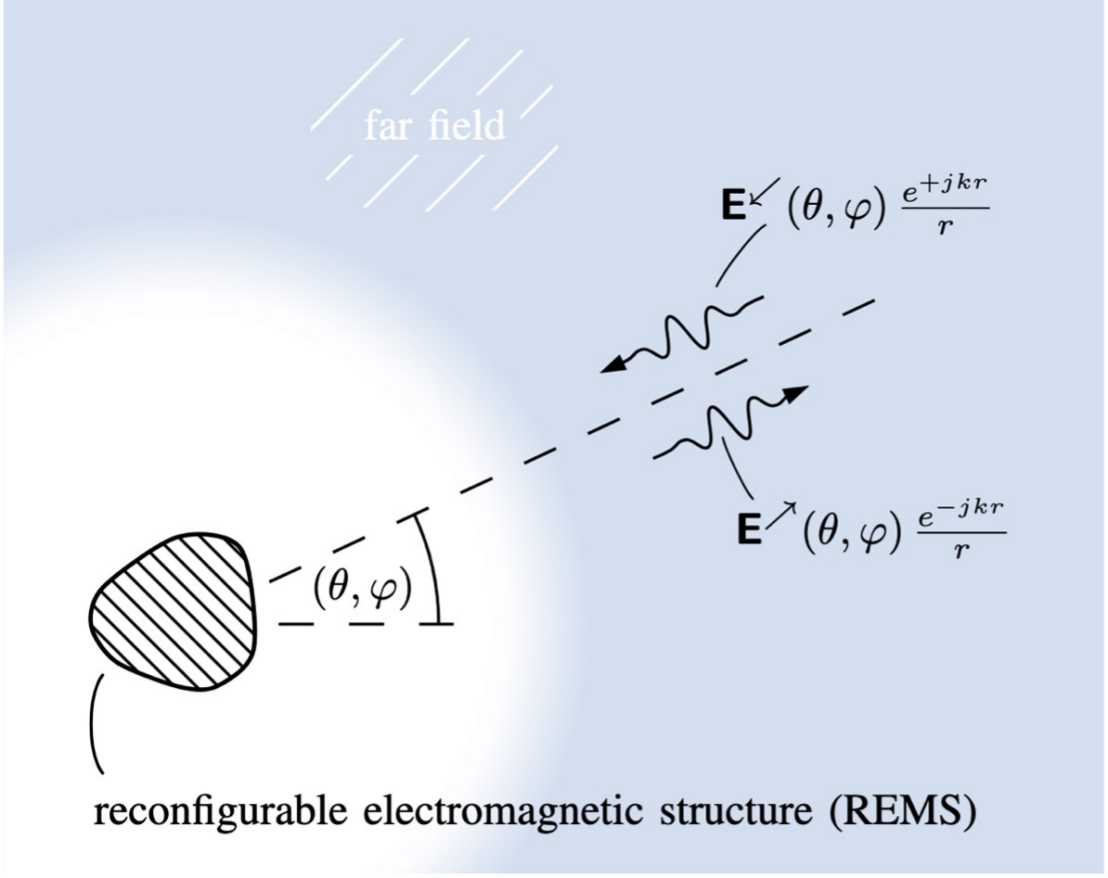Paper on Efficient and Physically-Consistent Modeling of Reconfigurable Electromagnetic Structures (REMS)
Paper preprint available online!

Reconfigurable electromagnetic structures (REMSs), such as reconfigurable reflectarrays (RRAs) or reconfigurable intelligent surfaces (RISs), hold significant potential to improve wireless communication and sensing systems. Even though several REMS modeling approaches have been proposed in recent years, the literature lacks models that are both computationally efficient and physically consistent. Our new framework fills this gap by providing a computationally efficient and physically consistent method for modeling general REMSs, which considers effects such as inter-antenna coupling, polarization, non-reciprocal materials, losses, and noise. We combine a circuit-theoretic approach with a new formalism that describes a REMS’s interaction with the electromagnetic (EM) waves in its far-field region. This approach enables us to efficiently and accurately compute far-field radiation patterns for arbitrary REMS configurations with only a single full-wave EM simulation of the non-reconfigurable components. EM simulations and a case study involving a planar RRA validate the efficiency and accuracy of our modeling approach.
The paper was co-authored by Alexander Stutz-Tirri, Georg Schwan, and Prof. Christoph Studer. A preprint is available on external page arXiv.